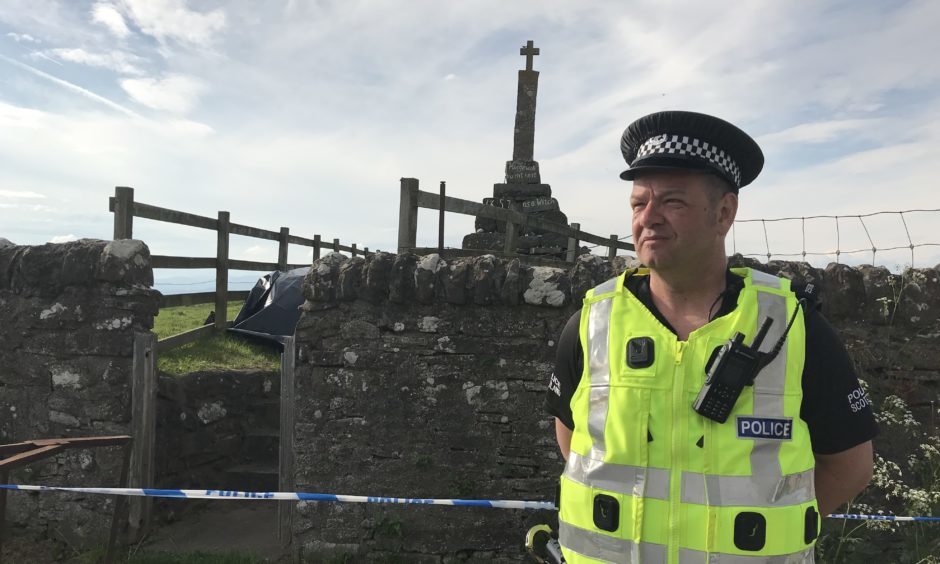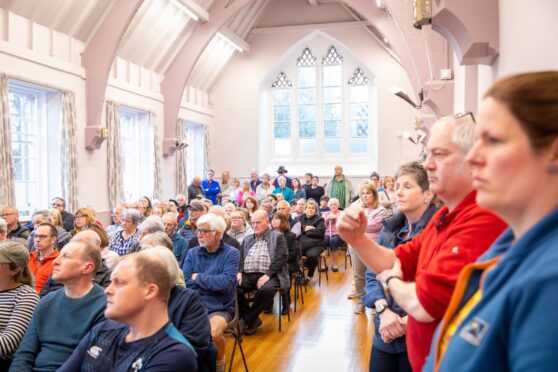An eerie monument to a Perthshire witch that claims a sinister connection to Moors Murderers Myra Hindley and Ian Brady has been sealed off by police probing the mysterious death of a young woman.
The Maggie Wall memorial near Dunning has been taped off as part of the investigation into the death of 22-year-old Annalise Johnstone.
The ground in front of the stone cairn and cross has also been covered in black plastic sheeting.
Ms Johnstone’s body was found a few miles along the B8062, near Auchterarder, 10 days ago. It is thought she, or others familiar with her, had visited the remote memorial around the time of her death.
The historic site, dedicated to a 17th Century witch, is one of at least 11 locations now being investigated by police.
Detective Superintendent James Smith has pledged officers are doing everything in their power to establish how Ms Johnstone died. He said he could not rule out foul play.
Mr Smith has appealed for help tracing Ms Johnstone’s missing mobile phone, purse and medicine bag. He has also asked for sightings of a silver Ford Galaxy which drove her to Auchterarder from her home in Ardrossan on Wednesday May 9.
The car was later recovered by police, seemingly abandoned outside a house in Inchture.
A Police Scotland spokesman confirmed the Maggie Wall site was part of the ongoing inquiry. “We are conducting a number of enquiries at various locations across Tayside,” he said.
Maggie Wall’s monument achieved notoriety during the trial of Brady and Hindley when it emerged the pair had visited it during their killing spree.
Photographs of them posing next to the stone cross during a holiday to Scotland in 1965 were published in the press, prompting headlines comparing Hindley to a witch.
It’s believed Brady had visited the site as a child.
The memorial, which sits by the roadside around half a mile south west of Dunning has the words “Maggie Wall burnt here 1657 as a witch” written across it in white letters which are regularly repainted.
It is the only monument of its kind in Scotland dedicated to a single witch. However, there is no evidence that Maggie even existed, never mind that this was the place of her death.
Some have suggested it was built by a local landowner who had been having an affair with a young woman from the village.
Others believe it may be linked to the executions of a group of women from Dunning who were tried for witchcraft in the 1660s.
The monument is still visited regularly by sightseers, many of whom leave small trinkets and offerings at its base.











